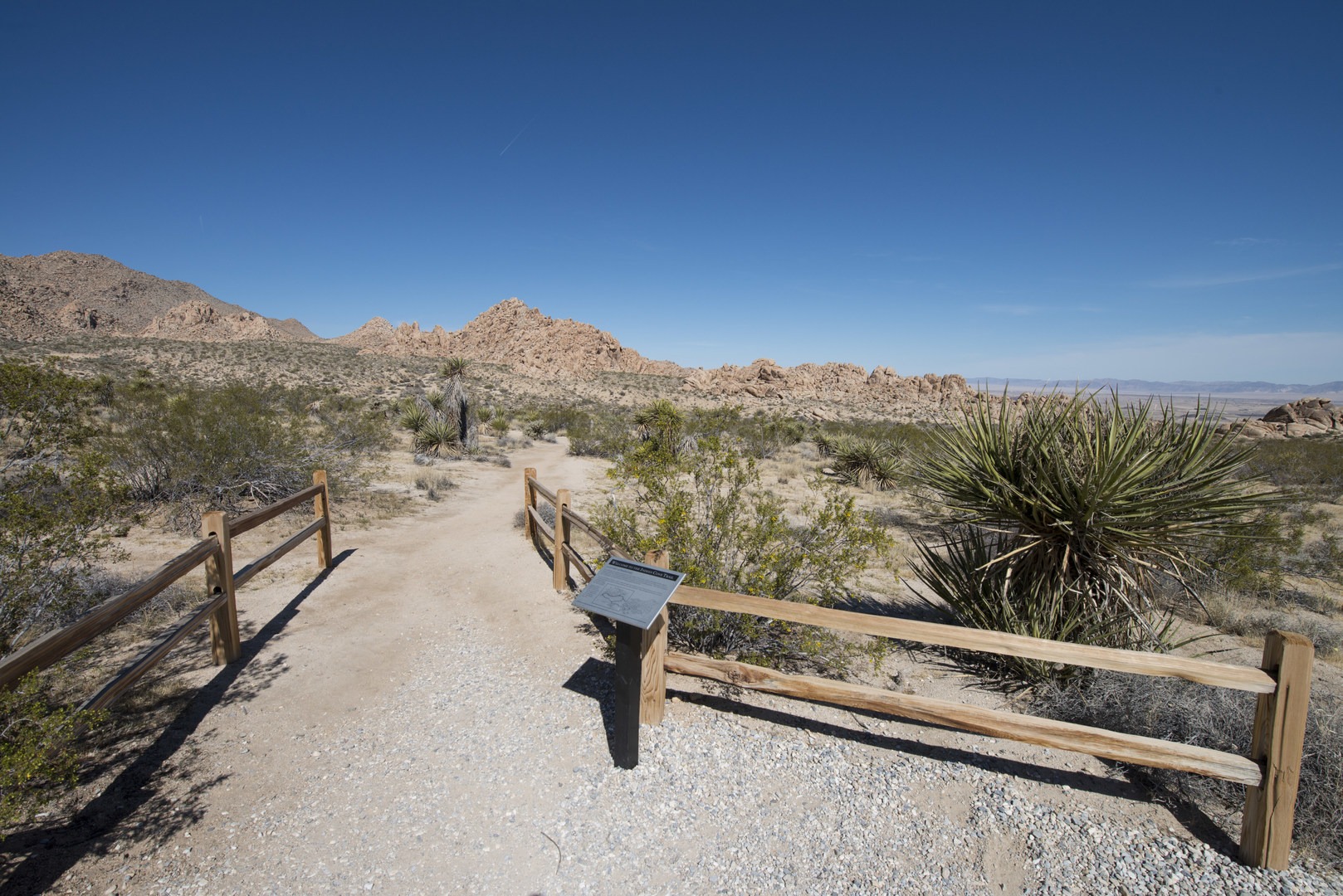For those who choose to stay at Indian Cove Campground or swing by Indian Cove Day Use Area, this short, easy hike is a must-do. Because it's tucked away in a relatively under-trodden corner of the park, expect surprisingly low traffic. The expansive wildflowers and surprisingly frequent wildlife sightings along this trail make it worthwhile to go a bit out of your way. And plus, at a mere 1.4 miles long, it’ll hardly even cut into your Joshua Tree National Park to-do list.
Interpretive placards placed around the short loop teach wanderers about the varied fauna and remarkably prolific flora thriving in this harsh Colorado/Mojave Desert transition zone as well as the history of the Native American influence on the region. Despite the crowds, careful observers can still catch a glimpse of desert wildlife—be on a sharp lookout for sidewinder rattlesnakes. Other creatures that call Joshua Tree National Park home are desert bighorn sheep, coyotes, jackrabbits, desert tortoises, and a host of lizards.
Desert plants along the path can look all but dead in the midst of a drought or a rainless spell. If you have the fortune to visit after a rain, expect to see an impressive array of colorful wildflowers and energetic bursts of green.
From the path, hikers can get a glimpse of the exposed granite monoliths that comprise the notorious Wonderland of Rocks. This crag attracts a host of climbers, and many excellent routes are visible/accessible from the trail. There are over 1,000 established routes and boulder problems scattered among the Wonderland of Rocks, and although the quality of the granite isn’t as pristine as its southern counterparts, there are still some classic must-climbs that any visiting climber should place at the top of the to-do list.
Even though the loop is short, it’s wise to over-prepare when it comes to water. Brace for extreme temperatures and little shade. The harsh desert climate has been known to catch complacent travelers unaware.


















Comments
Sign In and share them.